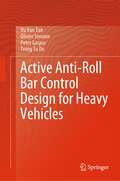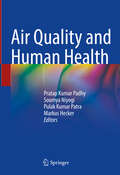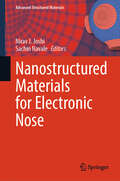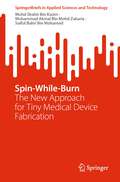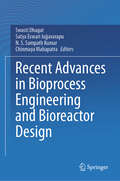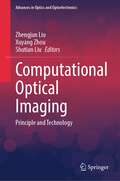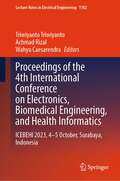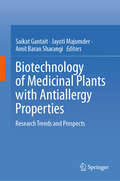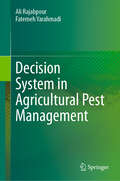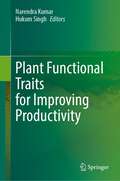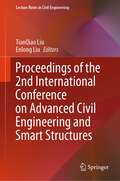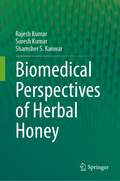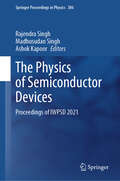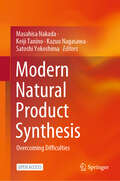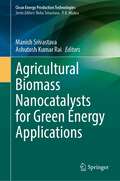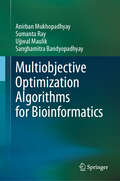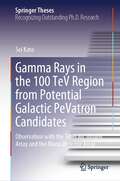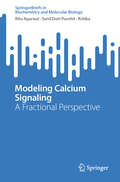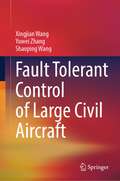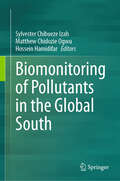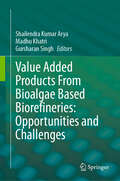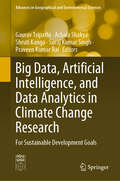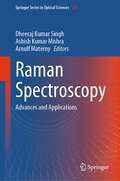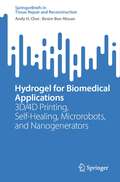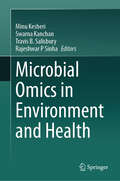- Table View
- List View
Active Anti-Roll Bar Control Design for Heavy Vehicles
by Vu Van Tan Olivier Sename Peter Gaspar Trong Tu DoThis book provides a comprehensive overview of active anti-roll bar systems on heavy vehicles as one of the most effective solutions for improving the roll stability of these vehicles. Due to the characteristics of these vehicles with heavy loads and high center of gravity, the possibility of roll instability occurs frequently and causes serious consequences for human life, vehicles, and traffic infrastructure. The book gives readers an in-depth survey of the roll instability characteristics of heavy vehicles such as single-unit trucks with rigid and flexible frames, and tractor semi-trailers. It then introduces an active anti-roll bar system, the electro-hydraulic actuators which use control methods such as LQR optimal and H∞ robust controller design. This work introduces a new control method, which is a combination of robust control with the linear parameter varying system (H∞/LPV). The validation of the new hybrid method is carried out using the nonlinear truck model from the TruckSim® software to assess the roll stability of heavy vehicles in order to limit the rollover accident. A number of examples are provided to illustrate the research results, which helps the readers have a practical and easy approach that can be applied to other active anti-roll bar systems for most forms of transport vehicles in general. This book caters to academics and practitioners who are interested in active anti-roll bar systems for the typical heavy vehicle available worldwide.
Air Quality and Human Health
by Markus Hecker Pratap Kumar Padhy Soumya Niyogi Pulak Kumar PatraThe book is one of the outcomes of the SPARC (Scheme for Promotion of Academic and Research Collaboration) project titled "Fine particulates matters in the air environment and their cancer risks in human beings," sponsored by MHRD (now MoE), Govt. of India. The editors of the book are PIs and Co-PIs of the said project. The text deliberates on air pollution's health risks with contributions from well-known experts from diverse research fields (environmental science, toxicology, geology, public health science, biology, physics, chemistry, and geospatial technology). It explores it its control and mitigation strategies. The book provides an up-to-date overview of the modern methods and tools used in air quality monitoring and human health risk assessment. Case studies from different global settings offer invaluable insights into air pollution-related regional health issues. It addresses all aspects of air quality, covering indoor-outdoor air pollution, gaseous and particulate pollutants; characterization of source and pathways of air pollutants; and the modeling and assessing of health risks (respiratory, epidemiological, and toxicological) with regional and global perspectives. It also addresses air quality management issues. The lucid explanation of the role of oxidative stress mechanisms and molecular biomarkers (genomics, proteomics) may be considered as inputs into the development of cancer therapeutics. Along with providing a scientific basis for air pollution, this book will help readers appreciate the environmental determinants of public health and apply research evidence to improve the quality of life. It also delineates future research initiatives and policy actions needed to protect human health from air pollution, locally and globally. The book will be of great educational value and help for consultation and teaching.
Nanostructured Materials for Electronic Nose (Advanced Structured Materials #213)
by Nirav J. Joshi Sachin NavaleThis book presents recent developments and fascinating attributes of electronic-nose (E-nose) technology based on advanced nanostructured materials that are compatible with modern semiconductor fabrication technology. The new trend in these nanostructured materials includes metal oxide nanostructures, 2D materials, graphene, and other carbon-based nanostructures. These versatile materials with remarkable electronic, mechanical, electrical, thermal properties, and potential e-nose in a wide range of fields are discussed in the book. Close attention is given to problems connected with stability, selectivity, and functionalizing of e-nose devices and deposited materials. The field of sensors is indeed in fast and consistent growth. This book consolidates information on each and every aspect of these novel materials, their gas sensing mechanisms, engineering, and e-nose devices covering the entire spectrum of up-to-date literature citations, current market, and patents in a very detailed manner. Moreover, in the past few years, tremendous advances have been made in experimental and theoretical studies on various properties of these materials. In summary, this book makes an attempt to provide in-depth study of recent advances and focuses on current problems related to selectivity and stability of sensor devices. The book is interesting to all materials professionals and researchers from universities and national laboratories working in the field of nanostructured materials-based gas sensors.
Spin-While-Burn: The New Approach for Tiny Medical Device Fabrication (SpringerBriefs in Applied Sciences and Technology)
by Mohd Shahir Kasim Muhammad Akmal Zakaria Saiful Bahri MohamedThis book explains the challenges and advancements in cutting precise cylindrical shapes on difficult materials through spark erosion. Titled "Spin while Burn," it addresses the drawbacks associated with this process, including unsatisfactory surface finish and limited productivity. Despite utilizing advanced computing and statistical optimization methods, achieving the ideal balance between material removal rate (MRR) and surface quality remains elusive. In response, the book introduces a hybrid ultrasonic-assisted approach in the wire electrical discharge turning (WEDT) process. By integrating a rotating workpiece with ultrasonic vibration, the authors evaluate its impact on MRR and surface finish. Through meticulous design experiments and statistical analysis, they explore various cutting parameters and machining paths. The book highlights the characterization of machined surfaces through elemental analysis and surface morphology evaluations. The results demonstrate the positiveeffects of integrating ultrasonic vibration into WEDT, even without optimized ultrasonic parameters. By reducing electrode wire debris and employing multi-objective parameter optimization using the genetic algorithm, significant improvements are achieved in MRR and surface roughness compared to conventional WEDT. "Spin while Burn" consists of five chapters, delving into the challenges, history, principles, performance, and future perspectives of the Spin-while-Burn process in manufacturing. This comprehensive book offers valuable insights into enhancing surface quality and productivity in the cutting of precise cylindrical shapes on challenging materials through spark erosion.
Recent Advances in Bioprocess Engineering and Bioreactor Design
by Swasti Dhagat Satya Eswari Jujjavarapu N. S. Sampath Kumar Chinmaya MahapatraThis book provides insights into the recent developments in the field of bioprocess technology and bioreactor design. Bioprocess engineering or biochemical engineering is a subcomponent of chemical engineering, which encompasses designing and developing those processes and equipment that are required for the manufacturing of products from biological materials and sources, such as agriculture, pharmaceutical, chemicals, polymers, food, etc., or for the treatment of environmental process, for example, waste water. The main focus of this book is to highlight the advancements in the field of bioprocess technology and bioreactor design. The book is divided into various chapters briefing all aspects of bioprocess engineering and focusing on the advances in bioprocess engineering. The book summarizes introduction to bioprocess technology and microbiology, isolation and maintenance of microbial strains, and sterilization techniques for advanced-level students and researchers. Different models depicting kinetics of microbial growth, substrate consumption, and product formation are discussed. The applications of enzymes have increased tremendously and therefore understanding their metabolic pathways to increase yields is also briefly discussed. The calculations of mass and energy balances associated with entropy changes and free energy. This book also covers the approaches for handling different types of cell cultures and current advancements in the area of bioprocess strategies for different culture types, which scientists and researchers working in the different cell cultures can refer to. The downstream processing of various industrially important products is also a part of this book. Apart from that, the process economics which ensures the feasibility and quality of any biological process is also dealt with as the last section of the book.
Computational Optical Imaging: Principle and Technology (Advances in Optics and Optoelectronics)
by Zhengjun Liu Xuyang Zhou Shutian LiuThis book highlights a comprehensive introduction to the principles and calculation methods of computational optical imaging. Integrating optical imaging and computing technology to achieve significant performance improvements, computational optical imaging has become an active research field in optics. It has given rise to the emerging of new concepts such as computational imaging, computational measurement and computational photography. As high-performance image detectors make image measurements discrete and digital, images are mostly recorded in the form of discrete data, almost replacing the continuous medium used for pattern recording. Computational optical imaging technology has become an effective way for people to study microscopic imaging. At present, different imaging systems are composed of continuous optical elements such as lenses and prisms or discrete optical elements such as spatial light modulators or digital micro-mirror devices. The current computing technology has permeated all aspects of imaging systems and gradually promotes the digitization of optical imaging systems. This book summarizes the representative work done in this field and introduces the latest results. Computing technology plays an important bridging role between theories of optics and experimental systems, which inspires more comprehensive and in-depth research. It has the advantages of high repeatability, flexibility, strong computing power and low cost. In this multidisciplinary field, researchers in computer science, optics and information science have joined together to extend its depth and breadth. Targeting cutting-edge issues to be solved in computational optics, this book introduces a variety of methods that involve theoretical innovations and technical breakthroughs in imaging resolution, the field of view, imaging speed, and computing speed. It intends to provide a handy reference and technical support for graduate students, researchers and professionals engaged in the study and practice of computational optical imaging.
Proceedings of the 4th International Conference on Electronics, Biomedical Engineering, and Health Informatics: ICEBEHI 2023, 4–5 October, Surabaya, Indonesia (Lecture Notes in Electrical Engineering #1182)
by Triwiyanto Triwiyanto Achmad Rizal Wahyu CaesarendraThis book presents high-quality peer-reviewed papers from the International Conference on Electronics, Biomedical Engineering, and Health Informatics (ICEBEHI 2023, October 4–5, Surabaya, Indonesia). The contents are broadly divided into three main topics (a) Electronics, (b) Biomedical Engineering, and (c) Health Informatics. The major focus is on emerging technologies and their applications in the domain of biomedical engineering. It includes papers based on original theoretical, practical, and experimental simulations, development, applications, measurements, and testing. Featuring the latest advances in the field of biomedical engineering applications, this book serves as a definitive reference resource for researchers, professors, and practitioners interested in exploring advanced techniques in the field of electronics, biomedical engineering, and health informatics. The applications and solutions discussed here provide excellent reference material for future product development.
Biotechnology of Medicinal Plants with Antiallergy Properties: Research Trends and Prospects
by Amit Baran Sharangi Saikat Gantait Jayoti MajumderThis book comprehensively covers critically investigated information on medicinal plants prioritized for their anti-allergy properties. It offers insights into strategies related to the distribution, mechanism of action, and assessment of antiallergic medicinal plants, and also delves into crucial aspects of modern biotechnological tools, addressing their implementation challenges, presenting innovative approaches through case studies, and exploring opportunities for nanotechnologies. These elaborated discussions aim to raise awareness and bridge the gap between human health and the biodiversity of antiallergic medicinal plants. As the book navigates the uncertainties of plant-based medicines in the post-COVID-19 era, it provides real-world applications showcasing the specific utility of medicinal plants through advanced biotechnological insights. This book covers several medicinal plants associated with antiallergy, exploring their modes of action, available secondary metabolites,and estimation methods. It also emphasizes all modern biotechnological interventions aimed at propagating, multiplying, and conserving this unique treasure trove of medicinal plants. The World Health Organization estimated that 80% of the populations of developing countries rely on traditional medicines, mostly plant drugs, for their primary health care needs. Increasing demand in both developing and developed countries resulted in the expanding trade of medicinal plants and has serious implications for the survival of several plant species, with many under threat of becoming extinct. This book describes various approaches to conserving these genetic resources. It discusses the whole spectrum of biotechnological tools from micro-propagation for large-scale multiplication and cell-culture techniques to the biosynthesis and enhancement of pharmaceutical compounds in plants. It also discusses the genetic transformation as well as short- to long-term conservation of plant genetic resources via synthetic seed production and cryopreservation, respectively. This reference book is useful for researchers in the pharmaceutical and biotechnological industries, medicinal chemists, biochemists, botanists, molecular biologists, academicians, students as well as allergic patients, traditional medicine practitioners, scientists in medicinal and aromatic plants, and other traditional medical practitioners.
Decision System in Agricultural Pest Management
by Ali Rajabpour Fatemeh YarahmadiThis book covers the theoretical and practical aspects of pest population components, explaining the probable reasons for pest density fluctuations and outbreaks in agricultural or other ecosystems. Agricultural pest management is a complex task that involves dealing with a variety of pests, including insects, diseases, and weeds. Decision systems can help farmers navigate this complexity by providing structured approaches to identify, monitor, and control pests. By making informed decisions based on data and models, farmers can reduce unnecessary pesticide applications, minimizing environmental impact and saving costs. This book aids in predicting pest outbreaks using population growth parameters and estimating economic crop losses through critical thresholds, illustrated with simple case studies. Additionally, the book covers image processing, remote sensing monitoring, and other novel methods for monitoring and quickly forecasting pest population outbreaks to developintegrated pest management (IPM) programs. The book is valuable for agricultural and entomological students (graduates and postgraduates), researchers, as well as pest managers and farmers.
Plant Functional Traits for Improving Productivity
by Narendra Kumar Hukum SinghThis book discusses how plant functional trait selection can help researchers to understand the plant-environment relationship, identify desirable traits, modulate plant resilience according to the changing climate, optimize resource use efficiency, and enhance genetic improvement. The plant functional traits-based approach provides a framework for improving crop productivity in agricultural systems with high precision. It enables researchers to develop crop varieties with desirable traits by focusing on the fundamental characteristics influencing growth, development, and response. Climate change and environmental variability pose significant agricultural challenges. The plant functional traits-based approach can help address these challenges by selecting and breeding traits that enhance resilience and adaptability capacity of the plant. This approach also contributes to sustainable agriculture, by focusing on increased food production, and resilience in extreme environmental conditions. This book provides guidance to the researchers and breeders to develop crop varieties with desirable traits. It is also a reference book for graduate and postgraduate students studying botany and agriculture.
Proceedings of the 2nd International Conference on Advanced Civil Engineering and Smart Structures (Lecture Notes in Civil Engineering #474)
by TianQiao Liu Enlong LiuThis book presents the proceedings of the 2nd International Conference on Advanced Civil Engineering and Smart Structures (ACESS2023), held on November 25-26, 2023, in Chengdu, China. ACESS2023 successfully brought together innovative academics and industrial experts from the field of civil engineering and smart structures to a common forum. The conference featured a special schedule comprising thought-provoking keynote speeches, thematic invited speeches sessions, and panel discussions to foster collaboration and knowledge exchange. The conference also offered participants a chance to immerse themselves in Chengdu's rich culture and heritage, ensuring a memorable and rewarding experience for all attendees. This book encapsulates the wealth of knowledge and insights shared during the conference, making it an invaluable resource for researchers, professionals, and students in the field.
Biomedical Perspectives of Herbal Honey
by Rajesh Kumar Suresh Kumar Shamsher S KanwarThis book overviews honey and herbs that profoundly affect human metabolism when mixed in a balanced ratio. It covers various aspects of honey added to herbs and provides collective information and practical approaches regarding herbal honey and its applications as functional food and medicine. Honey has miraculous properties like anti-bacterial, anti-fungal, free radical scavenging, and anti-carcinogenic, so honey has tremendous therapeutic importance. Infusion of extract from various medicinal herbs in honey further modulates its therapeutic potential. This book provides all the information about the essentials of herbs-infused honey and its efficiency in fighting against pathogenic bacteria. It presents the significance and benefits of honey infused with herbs that may promote/boost immunity to fight contagious or non-contagious diseases. Not only does this book explain the comprehensive knowledge of herbal honey and its medicinal properties based on current researched evidence, but it also explores the contribution of herbal honey in the food science and medicine industry as a significant part of nutraceuticals and functional food research. By providing knowledge about the formulation of traditionally used herbs in combination with honey, scientific knowledge can be supplied and made available to the common public which shall probably be a real contribution to society.
The Physics of Semiconductor Devices: Proceedings of IWPSD 2021 (Springer Proceedings in Physics #306)
by Rajendra Singh Madhusudan Singh Ashok KapoorThis book includes proceedings of the 21st International Workshop on Physics of Semiconductor Devices. The workshop is jointly organized by the Indian Institute of Technology, Delhi, and Solid State Physics Laboratory, Delhi, in collaboration with the Society for Semiconductor Devices and Semiconductor Society of India. This book disseminates the current knowledge of semiconductor physics and its applications across the scientific community. It is based on a biennial workshop that provides the participating research groups with a stimulating platform for interaction and collaboration with colleagues from the same scientific community. The book discusses the latest developments in III-nitrides; materials and devices, compound semiconductors, VLSI technology, optoelectronics, sensors, photovoltaics, crystal growth, epitaxy, and characterization, graphene, and other 2D materials and organic semiconductors. The research articles included in this book are contributed by various eminent scientists from all over the world. The book serves as a reference resource for researchers and practitioners in academia and industry.
Modern Natural Product Synthesis: Overcoming Difficulties
by Masahisa Nakada Keiji Tanino Kazuo Nagasawa Satoshi YokoshimaIn this book, key experts in the field of total synthesis of natural products in Japan describe the details of their synthesis routes including unexpected reactions and syntheses. By presenting detailed stories behind the total synthesis developments, including those routes that were unsuccessful the book provides the reader with a better understanding of how other researchers devise their strategy and overcome difficulties in their studies. The contributions in the book have focused on highlighting the research from Japan however it is appealing to researchers and students worldwide. This compilation of cutting-edge natural product synthesis provides high-quality expertise, especially to graduate students and young researchers, regarding research on synthetic organic chemistry. It can be utilized as teaching material in university seminars as well as provide guidance to researchers in the area of total synthesis.This is an open access book.
Agricultural Biomass Nanocatalysts for Green Energy Applications (Clean Energy Production Technologies)
by Manish Srivastava Ashutosh Kumar RaiThe book discusses the various sustainable approaches to combine agrowaste and nanomaterials into catalysts or nanocatalysts with the objective of enhancing biofuel production. It explores the practical sustainability of agronanocatalysts in bioenergy production at a mass scale, while also addressing the existing challenges and proposes sustainable remedies to overcome these limitations. Additionally, the book dives into the cost considerations, recognizing it as a major concern for the widespread utility of catalysts, and explores viable commercial applications in this context.Nanomaterials continue to attract attention in the field of proteins and enzymes due to their versatile physicochemical properties and potential. They offer opportunities to enhance various biofuel production processes by serving as catalysts in the reaction medium. For instance, studies have highlighted the significant improvements in cellulase enzyme production, stability, pretreatment of lignocellulosic biomass, and enzymatic hydrolysis efficiency achieved through the utilization of nanomaterials. The impact of nanomaterials on fermentative hydrogen production has also been documented. While the application of nanomaterials in biofuel production processes has been reported in the literature, there remains a need to focus on the type of nanomaterials, their synthesis, and their specific effects on important process parameters. Addressing and evaluating these factors is crucial to effectively improve and streamline biofuel production processes using nanomaterials. The book serves as a comprehensive introduction to nanomaterials and nanotechnology in biofuel production, catering to the needs of researchers, academicians and students.
Multiobjective Optimization Algorithms for Bioinformatics
by Ujjwal Maulik Sanghamitra Bandyopadhyay Anirban Mukhopadhyay Sumanta RayThis book provides an updated and in-depth introduction to the application of multiobjective optimization techniques in bioinformatics. In particular, it presents multiobjective solutions to a range of complex real-world bioinformatics problems. The authors first provide a comprehensive yet concise and self-contained introduction to relevant preliminary methodical constructions such as genetic algorithms, multiobjective optimization, data mining and several challenges in the bioinformatics domain. This is followed by several systematic applications of these techniques to real-world bioinformatics problems in the areas of gene expression and network biology. The book also features detailed theoretical and mathematical notes to facilitate reader comprehension. The book offers a valuable asset for a broad range of readers – from undergraduate to postgraduate, and as a textbook or reference work. Researchers and professionals can use the book not only to enrich their knowledge of multiobjective optimization and bioinformatics, but also as a comprehensive reference guide to applying and devising novel methods in bioinformatics and related domains.
Gamma Rays in the 100 TeV Region from Potential Galactic PeVatron Candidates: Observation with the Tibet Air Shower Array and the Muon Detector Array (Springer Theses)
by Sei KatoThis book presents two candidates for astrophysical accelerators of cosmic rays with petaelectron-volt (PeV) energies in our Galaxy, the so-called PeVatrons, through the observation of sub-PeV gamma rays performed by the Tibet air shower array. The two gamma-ray sources are TASG J1844-038—a newly detected source in this presented work—and HESS J1849-000. Reconstructing their gamma-ray energy spectra up to the sub-PeV range and also analyzing the archive data published by a radio survey, the book discusses in depth the emission mechanisms of the observed gamma rays and suggests that these two gamma-ray sources are candidates for PeVatrons. The results give insights into the population of PeVatron in the Galaxy, which is important to consider their contribution to the PeV cosmic rays observed at the Earth.
Modeling Calcium Signaling: A Fractional Perspective (SpringerBriefs in Biochemistry and Molecular Biology)
by Sunil Dutt Purohit Ritu Agarwal KritikaThis book features chapters written by renowned scientists from various parts of the world, providing an up-to-date survey of submanifold theory, spanning diverse topics and applications. The book covers a wide range of topics such as Chen–Ricci inequalities in differential geometry, optimal inequalities for Casorati curvatures in quaternion geometry, conformal η-Ricci–Yamabe solitons, submersion on statistical metallic structure, solitons in f(R, T)-gravity, metric-affine geometry, generalized Wintgen inequalities, tangent bundles, and Lagrangian submanifolds. Moreover, the book showcases the latest findings on Pythagorean submanifolds and submanifolds of four-dimensional f-manifolds. The chapters in this book delve into numerous problems and conjectures on submanifolds, providing valuable insights for scientists, educators, and graduate students looking to stay updated with the latest developments in the field. With its comprehensive coverage and detailed explanations, this book is an essential resource for anyone interested in submanifold theory.
Fault Tolerant Control of Large Civil Aircraft
by Xingjian Wang Yuwei Zhang Shaoping WangThis book provides a comprehensive analysis of fault tolerant control (FTC) for more-electric civil aircraft. FTC is a crucial approach to enhance the reliability and safety of aircraft in the event of actuator, sensor, or structural failures. Engineers and scientists from diverse disciplines, including aeronautics, electrical, mechanical, and control engineering, have been drawn to research on FTC. This book analyzes the impact of faults on performance degradation in dissimilar redundant actuation systems of civil aircraft and presents the FTC methods to ensure reliable actuation and efficient control. Additionally, this book addresses surface damage issues, such as the loss of elevator, horizontal stabilizer, and rudder, by providing representative FTC methods. The book’s major highlight is its comprehensive and systematic approach to FTC design, making it an ideal resource for readers interested in learning about FTC design for civil aircraft. The book benefits researchers, engineers, and graduate students in the fields of FTC, adaptive control, flight control, etc.
Biomonitoring of Pollutants in the Global South
by Sylvester Chibueze Izah Matthew Chidozie Ogwu Hossein HamidifarThe edited book serves as a reference on indicators of environmental pollution and how to sustainably ascertain the effects of different pollutants on life forms. It addresses an improved technology for monitoring contaminants, especially in the Global South and beyond, where the level of technology available for sustainable management of environmental quality is limited. Biomonitoring ecosystems' health by using organisms to gather quantitative data on environmental quality is one of the most straightforward and affordable ways to check environmental quality. Since organisms may function as environmental sensors, their use in the direct measurement of environmental quality in the process of biomonitoring studies implicates the health status of various ecosystems. In this regard, microorganisms, higher and lower plants, invertebrates, and vertebrate animals are beneficial since they can detect pollution levels and pollutants in the environment. This book is of interest and useful to toxicologists, water, soil, and air quality experts, practitioners, trainees, and trainers, biological sciences scientists, academicians, researchers, students (especially undergraduates and postgraduates), libraries, and other public knowledge repositories interested in novel and advanced practices in sustainable biomonitoring of environmental pollutants.
Value Added Products From Bioalgae Based Biorefineries: Opportunities and Challenges
by Shailendra Kumar Arya Madhu Khatri Gursharan SinghThis book covers wide aspects of algal technology and algae-based biorefinery aspects. Algae are the most prevalent, primitive, and abundant microbes on Earth, however, the commercialization of algal-based value-added products is still low due to the negligible dissemination of knowledge flow among the stakeholders and researchers.This book provides up-to-date information on the cultivation of microalgae, their harvesting, downstream processing, and diverse applications. It further discusses the macromolecules existing in microalgae, such as proteins, carbohydrates, and lipids, poly-unsaturated fatty acids, peptides, exo-polysaccharides, flavonoids and antioxidants. This book also highlights the advantages and some real-time challenges before the establishment of sustainable algal-based biorefineries. Further, it includes clear flow charts and figures in each chapter to aid in interpretation of every technical concept. This book motivates readers, entrepreneurs, and young farmers to exploit easily growing microalgae through cottage to large-scale biorefineries and start their own businesses for the production of value-added products.
Big Data, Artificial Intelligence, and Data Analytics in Climate Change Research: For Sustainable Development Goals (Advances in Geographical and Environmental Sciences)
by Praveen Kumar Rai Shruti Kanga Suraj Kumar Singh Gaurav Tripathi Achala ShakyaThis book explores the potential of big data, artificial intelligence (AI), and data analytics to address climate change and achieve the Sustainable Development Goals (SDGs). Furthermore, the book covers a wide range of related topics, including climate change data sources, big data analytics techniques, remote sensing, renewable energy, open data, public–private partnerships, ethical and legal issues, and case studies of successful applications. The book also discusses the challenges and opportunities presented by these technologies and provides insights into future research directions.In order to address climate change and achieve the SDGs, it is crucial to understand the complex interplay between climate and environmental factors. The use of big data, AI, and data analytics can play a vital role in this effort by providing the means to collect, process, and analyze vast amounts of environmental data. This book is an essential resource for researchers, policymakers, and practitioners interested in leveraging these technologies to tackle the pressing challenge of climate change and achieve the SDGs.
Raman Spectroscopy: Advances and Applications (Springer Series in Optical Sciences #248)
by Dheeraj Kumar Singh Ashish Kumar Mishra Arnulf MaternyThis book highlights recent advances of spectroscopic techniques based on Raman scattering. Different applications are introduced that serve as examples for the versatile use of Raman techniques. Raman spectroscopy is a marker free technique, which is capable of yielding detailed information about molecular systems in a non-destructive way. This makes it a valuable tool for, e.g., material science or medical research. The access to vibrational energy and dynamics yields fundamental insights into static and dynamical structural properties of molecules being influenced by and influencing their material science or medical research environment. The better understanding of the basic building blocks of materials helps to improve the functionality in various applications. Raman spectroscopy has become a truly interdisciplinary research tool, and the ongoing development of techniques makes it attractive for growing variety of scientific and industrial applications, which will be demonstrated in the book. While the “classical” linear spontaneous Raman spectroscopy is restricted in its applicability due to low signal intensities or the excitation of strong fluorescence background, new techniques have helped to overcome such problems. Examples, presented in the book, are surface-enhanced Raman scattering (SERS), and various associated techniques are used to drastically increase signal intensity, confocal, and tip-enhanced Raman scattering (TERS) allowing for high and even sub-diffraction limited spatial resolutions, coherent anti-Stokes Raman scattering (CARS) avoiding fluorescence background and allowing for time-resolved observations of vibrational dynamics, or hyper- and resonance Raman scattering influencing the scattering based on electronic resonances, etc.
Hydrogel for Biomedical Applications: 3D/4D Printing, Self-Healing, Microrobots, and Nanogenerators (Tissue Repair and Reconstruction)
by Andy H. Choi Besim Ben-NissanThis book highlights the latest clinical research and advancements in 3D (bio)printing and 4D printing using stimulus-responsive hydrogels as well as the concept of self-healing and its amalgamation with 3D printed injectable cell-laden tissue constructs. It also explores the use of metal-free “click” chemistry and enzymes such as horseradish peroxidase, hematin, tyrosinase, and transglutaminase to obtain chemically crosslinked hydrogels and the in vitro and in vivo responses. Lastly, the book briefly examines the future of drug delivery and the potentials offered by microrobotics and self-powered devices based on triboelectric nanogenerators. This book caters to biomedical researchers and clinical practitioners working in tissue reconstruction and drug/therapeutic delivery.
Microbial Omics in Environment and Health
by Rajeshwar P. Sinha Minu Kesheri Swarna Kanchan Travis B. SalisburyThis book describes the basic concepts and recent advances in new discoveries and technologies related to microbial omics and their role in environmental research and human health. The term "omics" refers to a blend of high-throughput analysis and traditional methods including genomics, transcriptomics, proteomics, lipidomics and metabolomics for a variety of applications in the field of life sciences, biomedical sciences, environmental sciences, and related industries. The book aims to fill the existing gap in terms of a comprehensive approach that incorporates recent advances in this dynamic field and provides an answer to why this field requires an interdisciplinary research approach. The focus of this book is on the applications of genomics, epigenomics, metagenomics, integrative omics, machine learning and microbiome research in environmental health, disease, wastewater epidemiology, antibiotic resistance, drug discovery, cancer, production of secondary metabolites of microbial origin, oxidative stress alleviating mechanisms, etc. The overall construction of this book emphasizes three major perspectives, namely, elaborate knowledge from fundamentals to recent advances in technologies about omics in general and its application in microbiology, environment, and health in particular; illustrative figures capable of easy visualization of complex pathways; and serving as a platform for highly demanded bioinformatics strategies including relevant codes, programming scripts, machine learning and use of artificial intelligence strategies needed to streamline the research outcomes. With global contributions from authors from internationally renowned organizations who excel in relevant research, this book will benefit bibliophiles and prospective audiences from the research fraternity, academia, professionals, and experts in the field of life sciences, biomedical as well as industries related to the development of drug design and novel advances in biotechnological applications.
